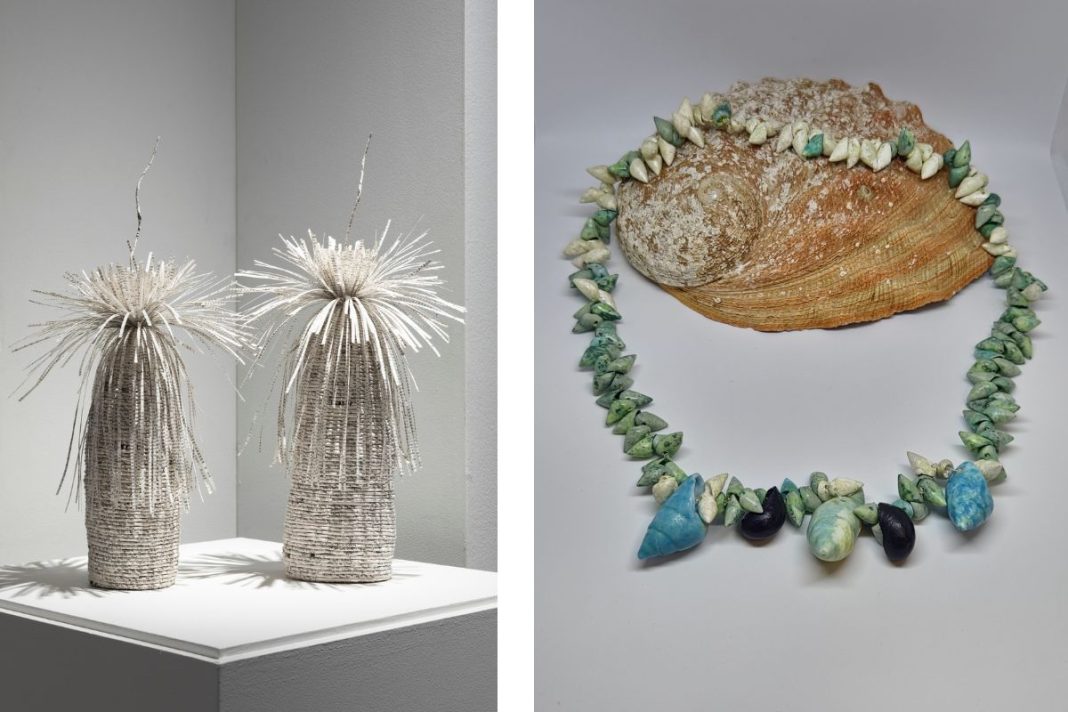Experience the intersection between art and science at the Waterhouse Natural Science Art Prize, now showing at National Archives of Australia.
This unique exhibition brings together artists from different disciplines as they turn their focus to the diversity of the natural world.
Acting Director-General Brooke Anderson says National Archives is proud to once again partner with the South Australian Museum to exhibit a range of thought-provoking works.
“We are thrilled to bring this amazing exhibition back to National Archives. From textile works to sculptures to paintings, the diverse array of works on display are a fascinating look at the ongoing dialogue between art and science,” says Ms Anderson.
“This exhibition is the only opportunity to view these incredible artworks outside of South Australia.”
Since 2002, the South Australian Museum’s Waterhouse Natural Science Art Prize has invited established and emerging artists to submit works that explore themes of art, science and the environment.
While visitors may come to view a beautiful collection of contemporary art, they will also be compelled to examine their own relationship with nature and science. Many of the featured works explore the complex relationships and interactions between humanity and the environment, contributing to the interrogation of issues facing our ecosystem and landscapes.
Jenna Lee, Gulumerridjin (Larrakia), Wardaman and KarraJarri Saltwater artist, was awarded this year’s Open Prize.
Her work Grass Tree – Growing Together reclaims the pages of a decades-old dictionary of ‘Aboriginal words and place names’. The dictionary, published in 1965, homogenised languages and presented words in isolation from place or the people who spoke them. These words were intended as inspiration for the naming of ‘houses, children and boats’. Lee’s work transforms this flawed text into paper sculptures of grass trees, resilient native plants that thrive after bushfires. Lee’s sculptures are a striking representation of how resources created for and by colonisers can be reappropriated and reconstructed by First Nations people. Her work draws a link between the ability of grass trees to ‘rise from the ashes’ and the fierce resilience of First Nations culture.
Andrew Gall, Pakana artist, wins this year’s Emerging Prize for his work Coming Together. His work features 3D-printed porcelain shells strung into a traditional kanalaritja shell necklace. Ocean acidification and warmer temperatures are impacting the ecosystems where these shells grow, putting the traditional cultural practice of necklace-making at risk. Gall sees his 3D-printed shells as a measure that may be necessary to allow the passing-down of knowledge that occurs during kanalaritja shell-stringing. His work speaks to the resilience of culture in the face of colonisation and climate change.
Over 22 works are featured in the exhibition, with mediums ranging from blown glass, acrylic and oil on linen, powder-coated steel, ceramics, brass, paper and deer antler.
Visitors can engage deeply with the works by attending a free object talk at 11am each day.
The Waterhouse Natural Science Art Prize is on display at National Archives of Australia until 27 October 2024.
More information can be found at naa.gov.au.



